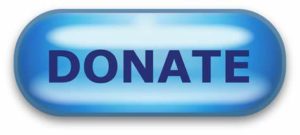News on the delay of implementation of the state’s A-F Report Card for schools was greeted with relief by public education advocates earlier this year. At the time, Chalkbeat noted:
Tennessee has delayed for a second year its plan to start giving A-F grades to its 1,800 public schools — another reprieve for schools that are expected to receive poor ratings.
Education Commissioner Penny Schwinn informed district leaders on Monday that her department will wait until after next school year to launch the system, which is designed to increase public awareness about the quality of K-12 education in Tennessee.
Just as last year, the delay is rooted in two emergency state laws passed in 2018 after days of online testing problems called into question the reliability of scores on the annual student assessment known as TNReady. Legislators ordered schools shielded from any “adverse action” from those scores, including assigning letter grades to schools.
While the current delay is directly tied to the failure of the state’s TNReady testing system, a recent story out of North Carolina should give lawmakers reason to reject the whole idea. The story details software giant SAS’s cozy relationship with ALEC — the American Legislative Exchange Council. SAS is the company that provides Tennessee’s TVAAS scores. ALEC is the Koch-funded right-wing group responsible for pushing state legislatures to privatize public schools by way of vouchers and charters.
Here’s more on how the A-F Report Card issue has been playing out in North Carolina:
North Carolina’s School Report Cards assign each school a single A-F letter grade representing its overall performance. The report cards have been controversial since state legislators introduced them in 2013 as the grades are highly correlated with levels of poverty and sometimes have the effect of pushing families away from traditional public schools.
Probably not by coincidence, ALEC has been peddling its “A-Plus Literacy Act” to lawmakers since early 2011. The model bill recommends a statewide A-F school report card system with a special focus on reporting results for students who score in the lowest 25th percentile, and it refers to the grading system as a “lynchpin for reforms.” One such reform is also included in the bill, as ALEC recommends students who attend F schools be given an opportunity to enroll in private schools instead.
So, to be clear, the company responsible for the data that assigns Tennessee schools (and teachers) “growth scores” is also buddying up with the advocacy group pushing a privatization agenda. How is it decided which schools (or systems) end up on the list of those to be privatized? Low growth scores — you know, the scores generated by SAS. So, the more successful ALEC is in advancing its agenda, the more likely SAS is to make money.
Oh, and about those TVAAS scores generated by SAS (for which they are paid millions in Tennessee taxpayer dollars each year):
Using administrative student data from New York City, we apply commonly estimated value-added models to an outcome teachers cannot plausibly affect: student height. We find the standard deviation of teacher effects on height is nearly as large as that for math and reading achievement, raising obvious questions about validity.
Of course, data validity doesn’t matter when everyone is getting paid and lawmakers get taken on fancy trips.

For more on education politics and policy in Tennessee, follow @TNEdReport
Your support — $5 or more today — makes publishing education news possible.
